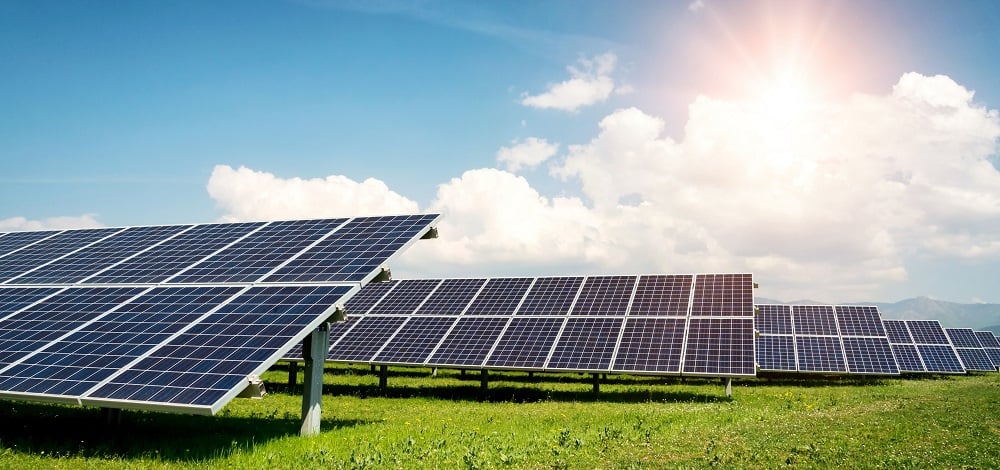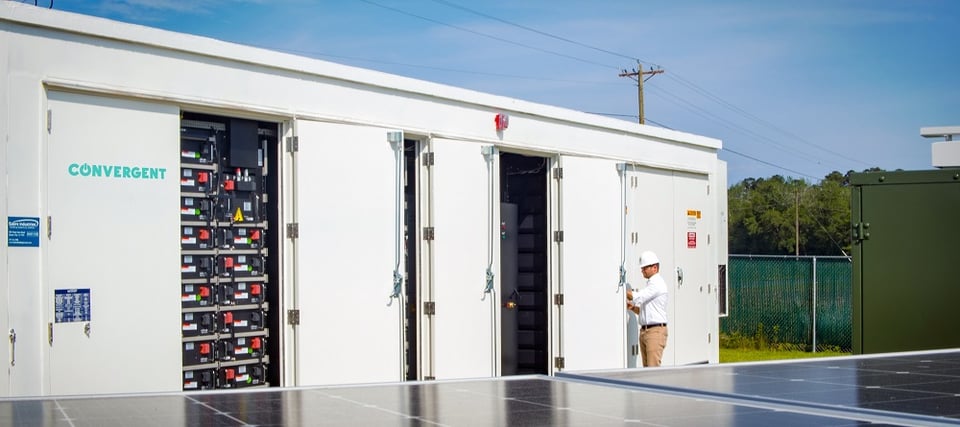Community Solar-Plus-Storage: Increasing Access to Renewable Energy

The Challenge: Equal Access to Renewable Energy
For too long, it has most been wealthy homeowners and businesses that have been able to benefit from access to the lower costs associated with renewable energy resources, namely solar energy. Solar energy requires hefty upfront fees to install and the space to do so. Individuals within low-income communities, renters, and businesses without the upfront capital have generally lacked equal access to renewable energy. As result, these groups have often faced higher electricity bills and exposure to greater carbon emissions than their wealthier counterparts.
How Community Solar Has Increased Access to Renewable Energy
Community Solar is an innovative approach for all electricity customers to benefit from the monetary savings and environmental benefits of solar PV without having to install these systems and carry the financial burden.
How does it work? Community solar developers typically partner with the local utilities, which allows customers to continue to receive power and be billed by their utility without any interruptions in service. Both residential and commercial and industrial (C&I) customers are eligible to participate, subject to the rules and incentives of their particular state incentive programs.
Through the programs, customers, can “subscribe” to a particular community solar project along with their neighbors and receive monthly savings or “credits” directly on their electricity bill. The sign-up process is usually simple with no upfront cost. Through this model, “subscribers” can expect to lower their monthly electricity bill by 5 – 20% depending on the project structure and local incentives! Essentially, customer can pay less for cleaner, greener energy.
Policymakers across the country are working hard to reduce barriers to entry for all sorts of customers. For example, they are easing qualification requirements for Low-to-Moderate Income (LMI) customers by not requiring a review of credit or FICO scores and permitting shorter contract terms to enable greater flexibility. Many are also requiring developers to book a significant percentage of LMI customers as a critical prerequisite to receive state funding.
Diverse investors, corporations, and customers have significantly increased their interest in this space in the past few years. According to the Solar Energy Industries Association (SEIA), the United States is expected to build over 4.3 GW of community solar projects in the next five years!
The Next Level: How Community Solar-Plus-Storage Goes One Step Further
Solar energy is only produced when the sun is shining! So, one step beyond community solar is a community solar-plus-storage program (often solar PV paired with a battery energy storage system), that allows for even greater access to solar energy.
Energy storage, which offers the ability to store solar energy when the sun is shining and dispatch when it isn’t, can extend the value of solar energy and increase the benefits of a community solar program. Energy storage can also be an important cost savings tool by capturing additional solar energy during certain times when electricity rates are low and discharging it during times when electricity rates are high.
A significant amount of solar energy is usually lost in the conversion process, which can also be mitigated by energy storage. There are numerous benefits of pairing solar energy with energy storage, outlined in a previous blog post: Solar-Plus-Storage: 3 Reasons Why They’re Better Together.
How Companies Can Support and Benefit from Community Solar-Plus-Storage
Community solar-plus-storage projects are a great way for businesses, especially the C&I sector, to lower their overall carbon footprint and electricity costs at the same time. In some states, businesses are able to trade state Renewable Energy Credits (RECs) that offer monetary and/or environmental incentives that bolster corporate social responsibility (CSR) or Environmental, Social, Governance (ESG) strategies and targets.
For example, here at Convergent we partnered with Tops Friendly Market (Tops), a leading full-service grocery retailer in New York, northern Pennsylvania, and Vermont, to deliver more renewable energy to upstate New Yorkers in the form of community solar-plus-storage. As a result of this partnership, over 75 Tops stores will be powered by the solar farms, which will reduce the stores’ carbon footprint. The solar-plus-storage projects developed by Convergent provide Tops and upstate New Yorkers access to solar energy whether or not the sun is shining and reduce the state’s reliance on power plants during peak demand hours.
Sustainability has always been at the core of Tops’ mission, which includes upholding standards that ensure the company reduces environmental waste and energy consumption while providing its customers with sustainably sourced, high-quality products. This partnership supports Tops in continuing to fulfill its mission and helps the communities in which it operates as well.
Why Convergent is Advancing Community Solar-Plus-Storage
Convergent is dedicated to mitigating the impact of a warming planet on current and future generations by advancing the clean energy transition. As a leading developer of energy storage solutions in North America, community-solar-plus storage has been a natural extension of Convergent’s capabilities, relationships, and portfolio of projects.
With over a decade of expertise financing, developing, and operating energy storage and solar-plus-storage, Convergent’s community solar-plus-storage projects are an important part of our mission to build an energy landscape that is less expensive, more reliable, and increasingly sustainable—one that benefits our employees, our communities, our customers, and our planet.
We are passionate about the clean energy transition and motivated to increase access to renewable energy for both individuals and companies across North America.
If your organization is interested in learning more about energy storage, solar-plus-storage, or community solar-plus-storage—or if you have an existing solar project you would like to add energy storage to, please reach out to us.
We’re ready to get to work lowering electricity costs and carbon emissions!

Surina Diddi is responsible for the economic and financial evaluation of potential growth opportunities, market analysis, real-time asset operations, and aspects of the investment pipeline.






